In recent years, the coffee industry has seen a profound shift toward greener, more responsible packaging options. With increasing awareness around plastic pollution and consumer demand for eco-friendly coffee cups, businesses and individuals alike are actively seeking better solutions. From biodegradable coffee cups made of plant-based materials to innovative new concepts in compostable technology, understanding how to choose the best coffee cups in 2025 starts with a clear grasp of what it means to be экологически чистый. In this guide, we’ll explore the essentials of selecting environmentally friendly coffee cups, review the various disposable cup materials on the market, and highlight the most sustainable and practical choices.
Why an “Environmentally Friendly Coffee Cups” Guide Matters in 2025
Growing Global Awareness
According to a 2022 study published by the World Wildlife Fund (WWF), nearly 8.8 million tons of plastic enter our oceans each year, much of which comes from single-use items, including coffee cups with plastic linings. This alarming trend highlights the importance of adopting environmentally friendly coffee cups, which can minimize landfill waste and reduce ocean pollution.
Consumer Demand and Legislative Action
Governments worldwide are passing legislation to phase out single-use plastics or impose taxes on them. For instance, the European Union has adopted the Single-Use Plastics Directive, mandating member countries to drastically reduce plastic-based disposable products. Coffee retailers, restaurants, and consumers are feeling the pressure to adapt quickly to more sustainable packaging options.
Corporate Responsibility
For companies large and small, embracing compostable coffee cups isn’t just a fashionable marketing statement—it’s an essential business practice that positively impacts brand image. Today’s consumers actively search for businesses that demonstrate authenticity in their sustainability commitments. Hence, this guide will equip you with a deeper understanding of how to make the switch to greener packaging responsibly and cost-effectively.
A Comprehensive Look at Disposable Coffee Cups
Before we dive into the best environmentally friendly coffee cups, it’s vital to understand the types of одноразовые стаканчики для кофе available in the market. Each type has different properties, uses, and impacts on the environment. Below are some of the most common categories.
Paper Cups with PE (Polyethylene) Lining
Material & Features
- Typically comprised of paperboard with an interior coating of polyethylene.
- PE lining prevents the paper from absorbing liquids and becoming soggy.
Pros
- Widely available and cost-effective.
- Good for hot and cold beverages.
- Maintains structural integrity under various temperature conditions.
Cons
- Not easily recyclable in standard municipal systems because of the plastic lining.
- Often ends up in landfills due to mixed-material composition.
- Contributes to plastic pollution if not disposed of properly.
Сценарии применения
- Commonly used in coffee shops, vending machines, and take-out settings.
- Suitable for short-term drink service and large-scale events.
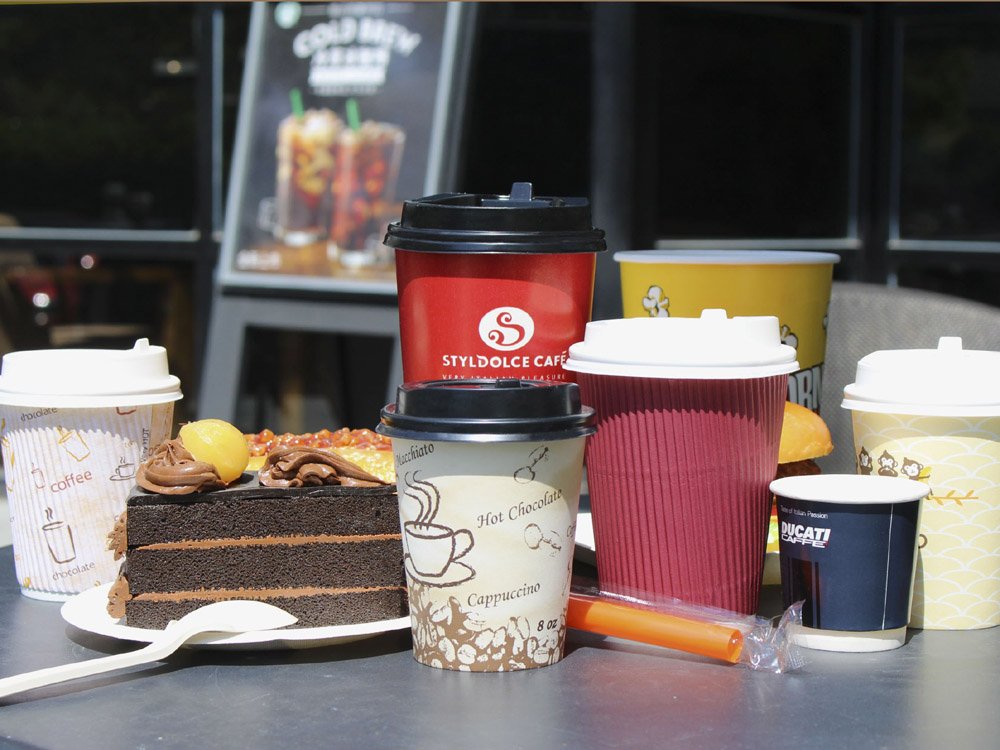
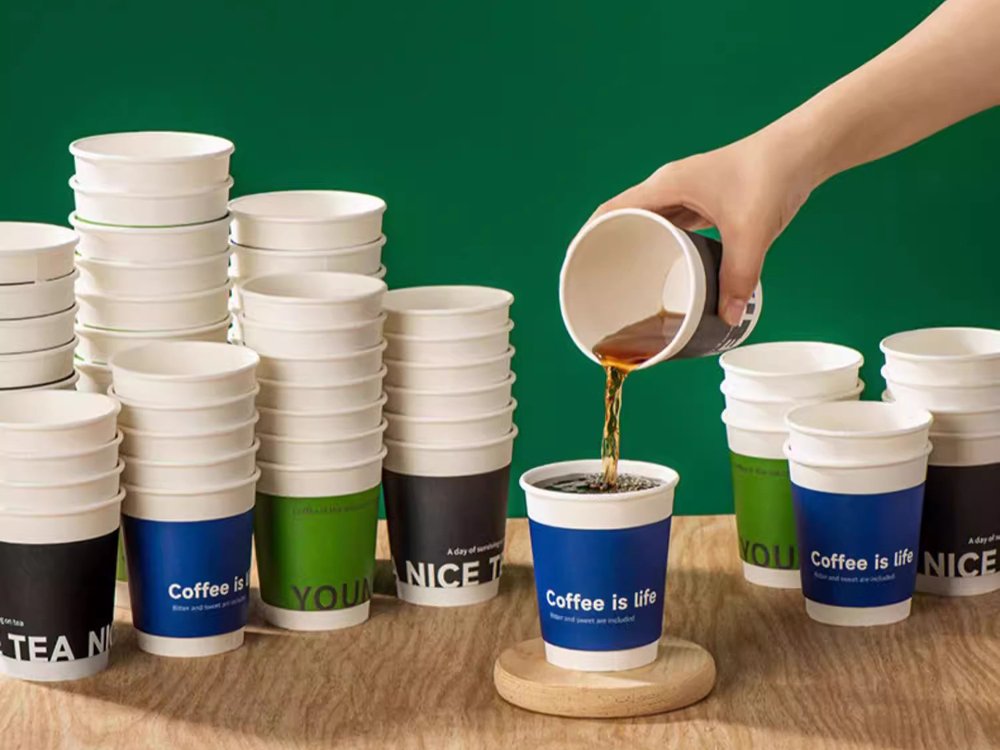
Paper Cups with PLA (Polylactic Acid) Coating
Material & Features
- Made of paper coated with PLA, a bioplastic derived from renewable resources like corn starch.
- Often labeled as biodegradable coffee cups или compostable coffee cups.
Pros
- Компостируемый under industrial composting conditions.
- Lower carbon footprint compared to petroleum-based plastics.
- Decomposes faster, provided it’s processed in the right facilities.
Cons
- More expensive to produce than traditional PE-lined cups.
- Requires specialized industrial composting facilities; not all locations have access.
- Biodegradability might be slower under standard landfill conditions.
Сценарии применения
- Ideal for eco-conscious coffee shops and restaurants aiming to reduce plastic use.
- Good for sustainable food service catering and green events.
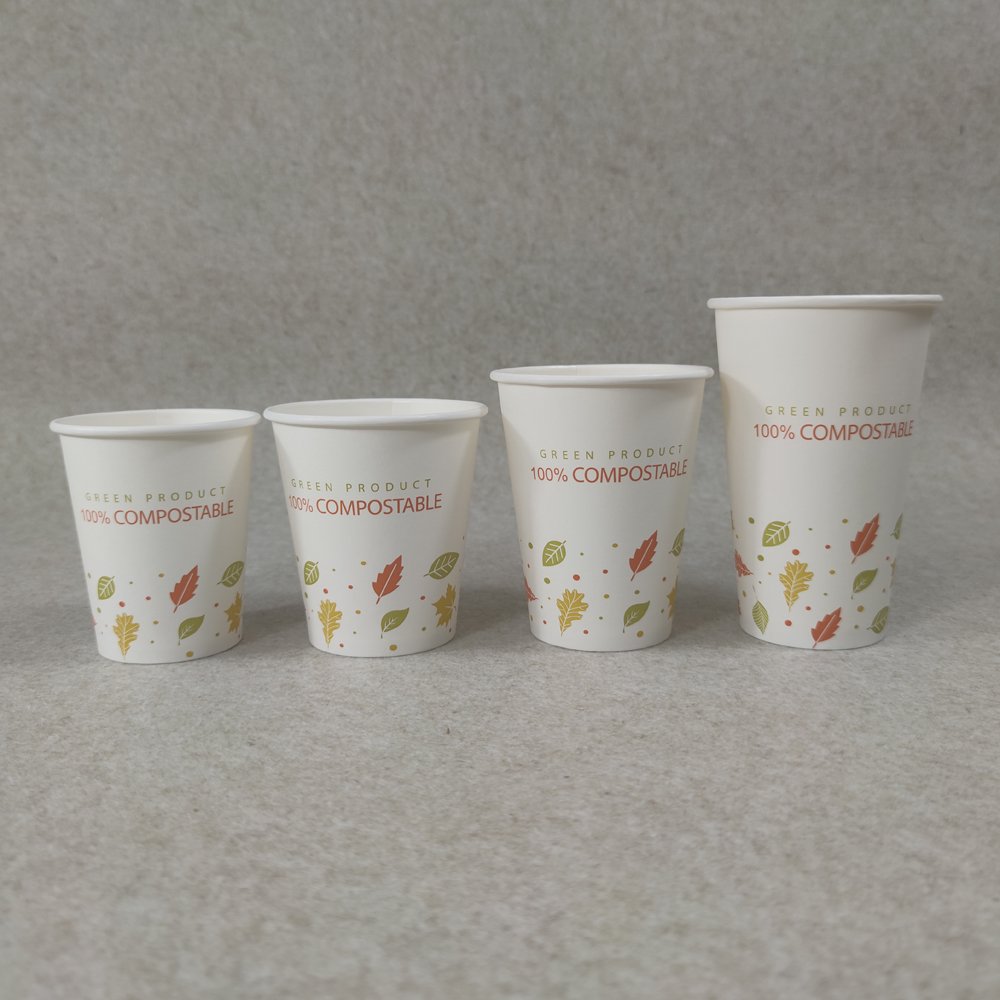
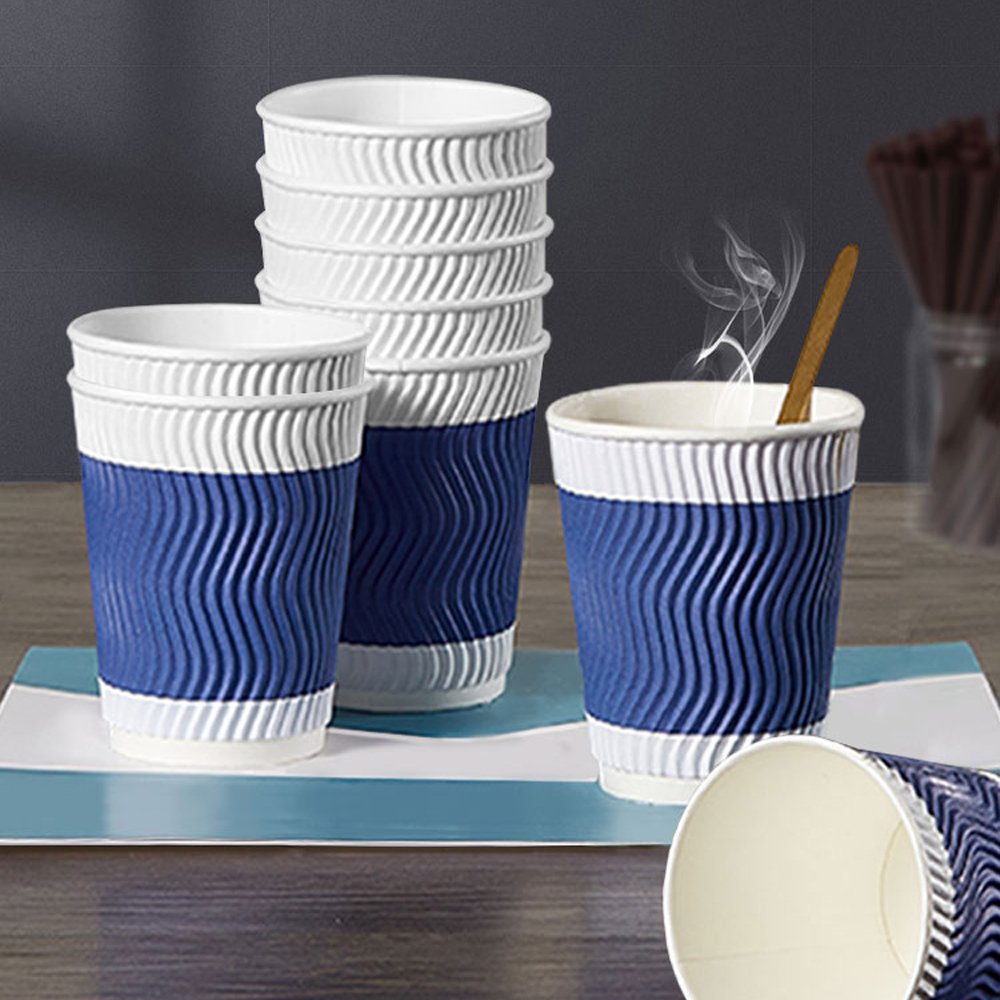
Water-Based Coated Paper Cups
Material & Features
- Paper cups featuring a water-based barrier instead of traditional plastic or bioplastic coatings.
- This coating can significantly reduce or even eliminate the use of petroleum-based liners.
Pros
- Often repulpable или easier to recycle, since there is minimal plastic to separate.
- May lower overall carbon footprint by using fewer fossil-fuel resources in production.
- Rising in popularity, with new formulations offering better heat tolerance and leak-resistance.
Cons
- Might have higher production costs than standard PE-lined cups, depending on supplier and technology.
- Availability can be limited as it’s still an emerging solution in many markets.
- Performance varies based on the specific water-based formula; some options may not fully match PE or PLA in durability.
Сценарии применения
- Cafés, restaurants, and foodservice providers looking to improve recyclability without relying on industrial composting.
- Eco-focused brands wanting to reduce plastic usage and streamline waste management.
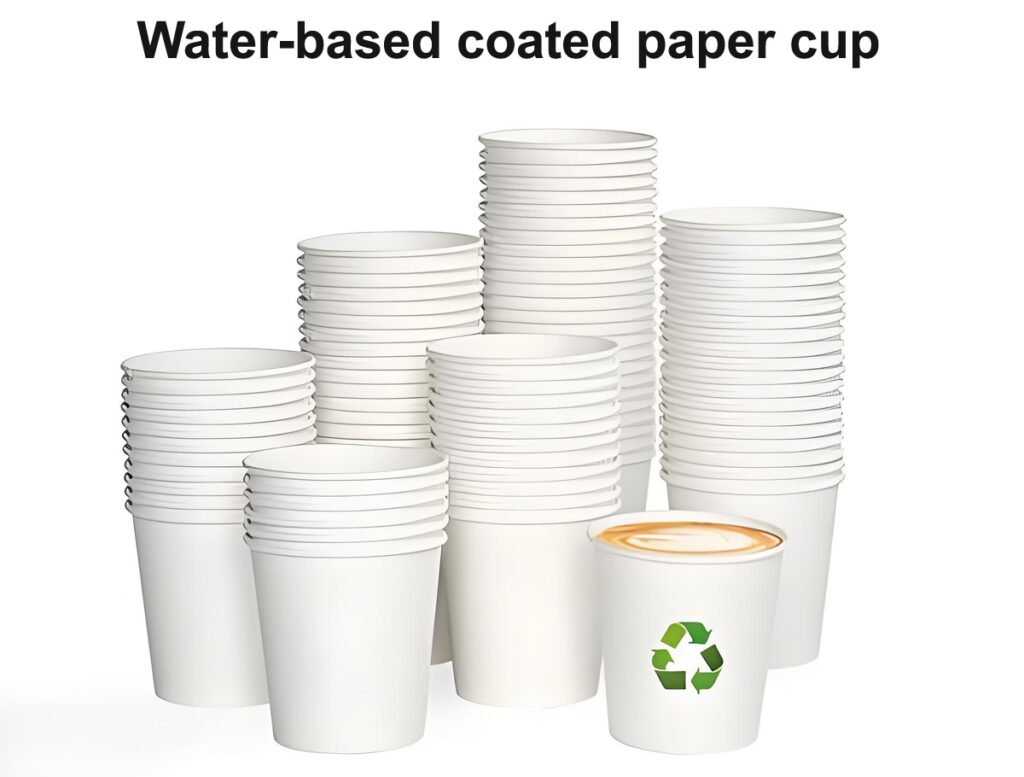
Styrofoam (Polystyrene) Cups
Material & Features
- Made of foamed polystyrene, known for its lightweight and insulating properties.
Pros
- Highly effective insulation keeps drinks hot or cold for extended periods.
- Low production cost and widespread availability.
- Very durable in short-term usage scenarios.
Cons
- Неразлагаемый and notoriously difficult to recycle.
- Breaks down into microplastics that can contaminate ecosystems.
- Banned or heavily restricted in many jurisdictions due to environmental concerns.
Сценарии применения
- Historically popular in fast-food chains and convenience stores.
- Rapidly falling out of favor because of legislative bans and negative public perception.

Bioplastic Cups (e.g., CPLA, Cornstarch)
Material & Features
- Produced from renewable plant materials like corn or sugarcane (bagasse).
- Some cups are partially compostable, depending on the exact resin type.
Pros
- Reduces dependence on petroleum-based plastics.
- Significantly lower carbon footprint than traditional plastics.
- Many can biodegrade or compost in industrial conditions.
Cons
- Limited disposal and recycling options without specialized facilities.
- Generally costlier than conventional plastic cups.
- Confusion among consumers about proper disposal protocols.
Сценарии применения
- Commonly used in eco-friendly cafes and restaurants.
- Useful in scenarios where a see-through cup is needed, such as cold beverages and smoothies.
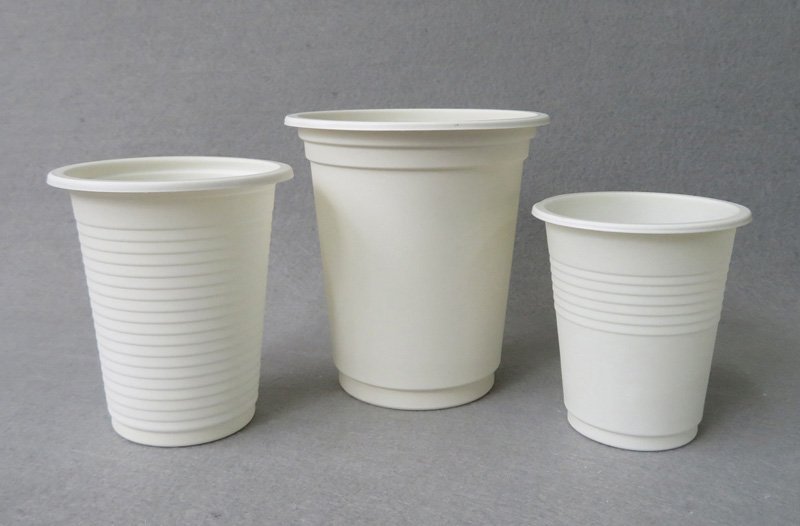
Bagasse & Bamboo Fiber Cups
Material & Features
- Constructed primarily from the sugarcane by-product known as bagasse, combined with bamboo pulp.
- Both sugarcane and bamboo are fast-growing, renewable resources requiring minimal pesticide usage.
Pros
- Highly renewable resources; sugarcane waste (bagasse) and bamboo grow quickly.
- Often компостируемый under proper conditions.
- Natural aesthetic that appeals to eco-conscious consumers.
Cons
- Relatively new to the market, so availability may be limited.
- Production costs can be higher than standard paper cups.
- Requires adhesives or minimal synthetic binding agents, which may affect compostability in some products.
Сценарии применения
- Premium coffee shops and boutique retailers seeking to project a strong eco-friendly image.
- Events or establishments that want to stand out with unique, natural-themed designs.
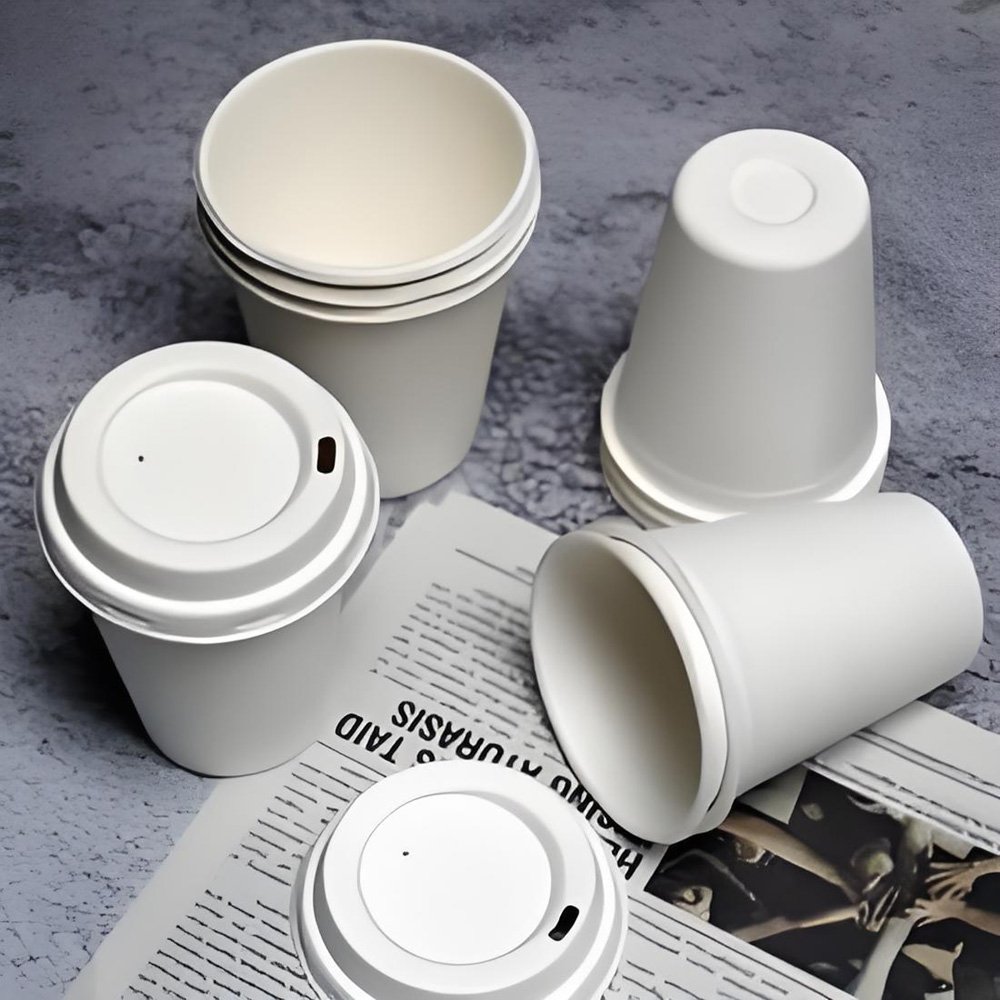
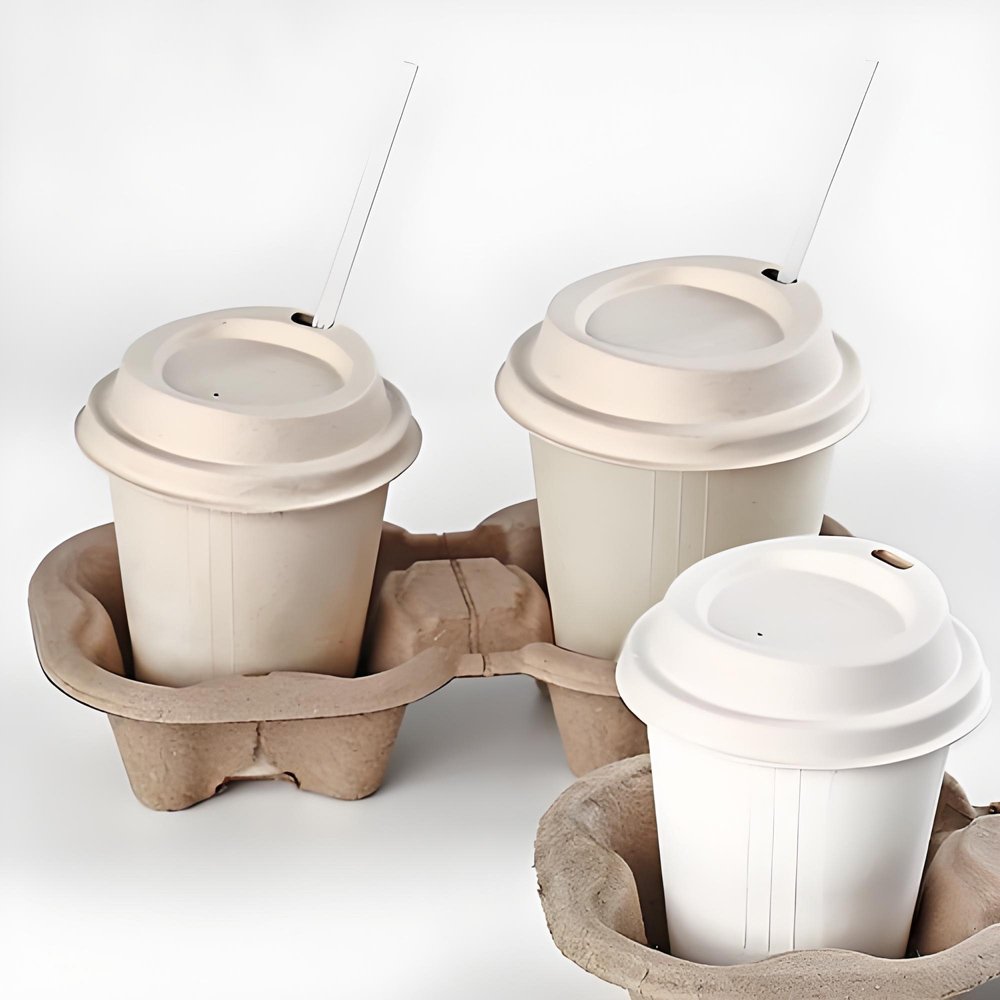
Comparison Table of Different Types of Disposable Coffee Cups
Below is a quick side-by-side comparison of the mentioned disposable coffee cups:
| Материал | Экологичность | Стоимость | Key Benefit | Disposal Method |
|---|---|---|---|---|
| PE-Lined Paper | Low (mixed materials) | Низкий | Widely Available | Landfill or special recycling |
| PLA-Lined Paper | Medium-High (compostable) | Средний | Lower Carbon Footprint | Industrial Composting Facilities |
| Water-Based Coated | Medium-High (easier to recycle) | Medium-High | Repulpable, Minimal Plastic | Recycling (where facilities exist) |
| Styrofoam (EPS) | Very Low | Very Low | Excellent Insulation | Limited Recycling |
| Bioplastic (CPLA) | Medium-High (partially compostable) | Medium-High | Renewable Resources | Промышленное компостирование |
| Bagasse & Bamboo Fiber | High (rapidly renewable) | Medium-High | Premium Eco Aesthetic | Composting/Biodegradable |
Best Environmentally Friendly Coffee Cups
When it comes to determining the best coffee cups for the environment, businesses and consumers must consider not only the materials used but also the life cycle of the product—from production to disposal. Below are the front-runners for truly eco-friendly coffee cups:
- PLA-Lined Paper Cups
- PLA-derived coatings break down much more rapidly in composting facilities, making them a solid option for a greener choice.
- These cups reduce reliance on petrochemicals, thus emitting fewer greenhouse gases during manufacturing.
- Bagasse & Bamboo Fiber Cups
- As fast-growing, renewable resources, bagasse and bamboo require fewer agricultural inputs than typical tree-based paper.
- Many of these cups are compostable under proper conditions and are increasingly embraced by specialty coffee shops.
- Water-Based Coated Paper Cups
- Use a minimal-plastic barrier that may improve recyclability.
- Provide a middle-ground solution for businesses that can’t access industrial composting but still want to avoid PE or PLA linings.
- Recyclable & Reusable Cups
- While not strictly “disposable,” some markets have shifted toward “bring your own cup” or deposit-based reusable systems.
- These significantly cut down on waste, though they require an extra step of cleaning and maintenance.
When evaluating options, it’s essential to choose a cup that consumers will actually dispose of correctly. Even the best coffee cups can have an environmental impact if they end up in the wrong waste stream.
Recommended Use: Bioleader’s Eco-Friendly Paper Cups
For businesses seeking both high-quality и экологически чистый coffee cup solutions, Биолидер stands out as a trusted provider. Their Покрытие PLA или water-based paper cups offer superior durability и no-leak performance, ensuring a positive drinking experience without the typical downsides of traditional plastic linings. Thanks to компостируемый materials and stringent quality controls, these cups effectively reduce the environmental impact and support circular economy initiatives. Having exported their eco-conscious products to 70+ countries, Bioleader has earned long-term orders и high praise for their cost-effectiveness—making them a go-to choice for companies aiming to seamlessly transition to устойчивое развитие упаковка.

Expert Insights and Real-World Examples
Current Industry Trends
Industry experts forecast a 15% compound annual growth rate (CAGR) in the global market for biodegradable coffee cups over the next five years. Much of this growth is driven by consumer demand, regulatory pressure, and advances in compostable materials technology. Coffee giants are exploring “closed-loop” systems, where compostable cups are collected, and composted, and the resulting organic matter is used to grow more renewable resources.
Мнения экспертов
Dr. Emily Richards, a sustainability consultant for the Environmental Packaging Alliance, emphasizes that the transition to eco-friendly coffee cups requires a multi-stakeholder approach. “It’s not just about having the right cup material—you also need proper consumer education, a robust waste management infrastructure, and legislative support,” she states.
John Taylor, an analyst at Green Market Insights, adds, “The next big wave will be biodegradable coatings that break down in a matter of weeks, significantly reducing long-term waste accumulation.”
Practical Use Cases and Feedback
- Local Café Adoption
A small café chain in California, “Green Brew,” switched to PLA-lined paper cups. Over six months, they reduced their plastic waste by 30% and received overwhelmingly positive customer feedback. The move attracted new patrons specifically seeking environmentally friendly coffee cups. - Large Event Implementation
A major music festival in the UK tested a mix of bagasse & bamboo fiber cups and used on-site industrial composters to process the waste. Attendees appreciated the festival’s eco-conscious effort, and the initiative garnered national media attention. - Bioleader’s PLA Coated Coffee Cups
Bioleader’s PLA coated coffee cups have been exported to more than 70+ countries and have received high praise from customers for their компостируемый, durability, no-leak performance, and high cost-effectiveness. Long-term orders continue to grow as businesses aim to meet stricter environmental standards without compromising on product quality.
FAQ – About Environmentally Friendly Coffee Cups
Below are ten commonly searched queries on Google, along with concise answers to guide consumers and businesses.
- Q: What makes a coffee cup “environmentally friendly”?
A: Primarily, it’s the material and end-of-life disposal. If a cup is made from renewable resources, has a lower carbon footprint during production, and can decompose or be recycled easily, it’s considered more eco-friendly. - Q: Are compostable coffee cups truly compostable at home?
A: Most compostable cups require industrial composting conditions (high heat, controlled humidity). Some materials can break down in home compost piles, but the process may take much longer. - Q: Which disposable coffee cups are best for hot beverages?
A: PLA-lined paper cups, bagasse & bamboo fiber cups, and water-based coated cups all handle high temperatures well without leaching chemicals or breaking down prematurely. - Q: Can I recycle paper cups with plastic lining?
A: Standard curbside recycling often does not accept plastic-lined cups due to mixed materials. Some specialized facilities can separate the lining, but availability varies by location. - Q: Do biodegradable cups break down in landfills?
A: In landfills, even organic matter can take an extended period to degrade due to a lack of oxygen and microbial activity. True biodegradability is best achieved through composting environments. - Q: Is Styrofoam ever eco-friendly?
A: In general, Styrofoam (polystyrene) is not considered eco-friendly due to its non-biodegradable nature and difficulty in recycling. Some specialized recycling programs exist, but they’re not widespread. - Q: Are water-based coatings durable enough for hot coffee?
A: Most emerging water-based coatings can handle hot beverages adequately, but performance varies by brand. It’s important to test them for heat resistance and leak prevention before full adoption. - Q: Are reusable cups always better than disposable ones?
A: Reusable cups typically have a higher initial environmental impact but, after repeated use, can offset that impact significantly. The key is ensuring consistent use and proper cleaning.
Резюме
Choosing the best environmentally friendly coffee cups in 2025 goes far beyond simply picking a cup labeled “green.” It involves understanding the different materials—ranging from PE-lined paper cups to biodegradable coffee cups like PLA-lined, water-based coated, или bagasse & bamboo fiber options—and knowing how they impact the entire product life cycle. This blog highlighted the urgency of shifting to eco-friendly coffee cups, the variety of disposable coffee cups on the market, and expert insights on what truly constitutes a sustainable solution. By paying close attention to material composition, disposal methods, and innovative trends in green manufacturing, businesses can stay ahead of legislation and consumer demand, ultimately minimizing waste and building a more sustainable future.
References Sources List
- Emily Richards, “Sustainable Packaging Innovations in Food Service”, www.enviro-packaging.org/emily-richards-study
- John Taylor, “Green Market Insights 2023”, www.greenmarketinsights.com/report2023
- World Wildlife Fund (WWF), “Plastic Waste Statistics 2022”, www.worldwildlife.org/plastic-statistics-2022
- Environmental Paper Network, “Paper and its Environmental Footprint”, www.environmentalpaper.org/footprint
- European Commission, “Single-Use Plastics Directive”, ec.europa.eu/environment/single-use-plastics
- BPI (Biodegradable Products Institute), “Certification Standards for Compostability”, www.bpiworld.org/certification-standards
- Green Events UK, “Sustainable Approaches to Large Gatherings”, www.greeneventsuk.org/guide
- Forest Stewardship Council (FSC), “Responsible Forestry Practices”, www.fsc.org/responsible-forestry
- Michael Johnson, “Industrial Composting Facilities: The Future of Waste Management”, www.wastetechmag.org/johnson-facilities


